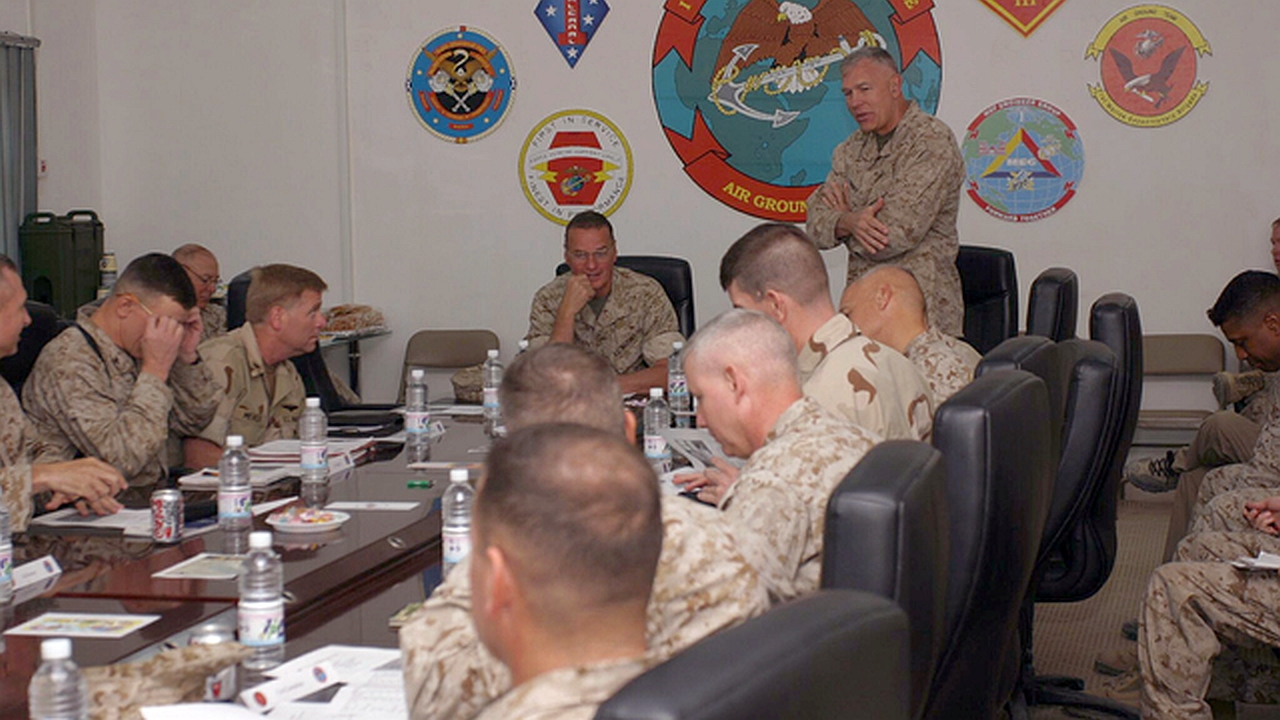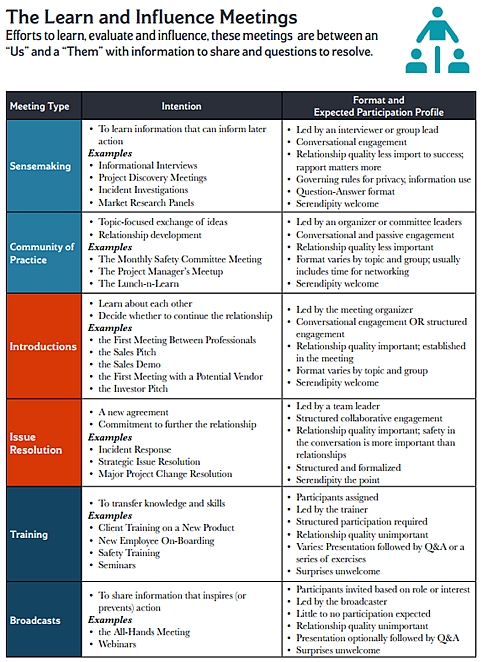
Organization Management Rhythm (part 1.5): The Learn and Influence Meetings
This article is part 1.5 of a series of articles on Organization Management Rhythm.
These meetings are designed to transfer information and intention from one person or group to another. The people involved can be clearly separated into groups that think of themselves as us and the others as them.
1. Sensemaking – Discovery Meetings, Incident Investigations, Community Input Sessions
a. Questions answered
i. What can we learn from this issue?
ii. How can we make sense of it?
b. Purpose
i. Learn about issue to inform others
ii. Gain a sense of understanding
iii. Get help
c. Work outcomes
i. Shared data
ii. New insights to lead to action
d. Human outcomes
i. Sense of belonging and support
ii. Understanding of the issue
iii. Insight
2. Introduction – Job Interview, Sales Demos, Investment Pitches
a. Questions answered
i. How might we work together
ii. Are we going to meet again
b. Purpose
i. Learn about each other
ii. Decide to continue the relationship
c. Work outcomes
i. Possible new resources
ii. New investment/sale
d. Human outcomes
i. New relationship
ii. Broadening horizons
iii. Possibility for advancement
3. Issue Resolution – Support Team Escalation, Conflict Resolution, Disputes
a. Questions answered
i. What to do next?
ii. Is there a satisfactory way to move forward
b. Purpose
i. New agreement or reconciliation
ii. Secure commitment to further the relationship
c. Work outcomes
i. An agreement
ii. Clarity on way forward
d. Human outcomes
i. Closure
4. Community of Practice – Safety Meetings, Meetups, Lunch and Learn
a. Questions answered
i. What can we learn from each other?
ii. How to advance the topic?
b. Purpose
i. Exchange of ideas
ii. Organization and individual development
iii. Relationship development
c. Work outcomes
i. Focused attention in an area that does not need a dedicated team
ii. More skilled people
d. Human outcomes
i. New knowledge, skills, attitudes
ii. Improved abilities
iii. Recognition
iv. Sense of belonging
v. Larger professional networks
5. Training – Client training, Safety Training, Onboarding
a. Questions answered
i. What I know you need to learn
ii. How can we measure knowledge was successfully transferred
b. Purpose
i. Gain new knowledge and skills
c. Work outcomes
i. Improved job performance
ii. Certification or credentials
iii. Creation of records to show who has desired knowledge
d. Human outcomes
i. New knowledge and skills
ii. Improved confidence
iii. Ability to perform the job better
6. Broadcast – Webinar, Conference, All Hands
a. Questions answered
i. What should be shared with the larger group?
ii. What should we share with the public?
b. Purpose
i. Sharing of information
c. Work outcomes
i. Knowledge distribution
ii. Improved or repaired reputation
iii. Improved group cohesion
d. Human Outcomes
i. Awareness of what is available
ii. Awareness of organization happenings
iii. Feeling of being in the know and part of the organization

Next part (part 2): Meeting rules.
Acknowledgements: Thank you to Tomi Antill, Keith Davis, Elise Keith from Lucid Meetings, JFHQ-C Leadership, and Kendra Albright from Kent State University, without whose support this series would not have been possible.
Header image source: U.S. National Archives, Public Domain.






